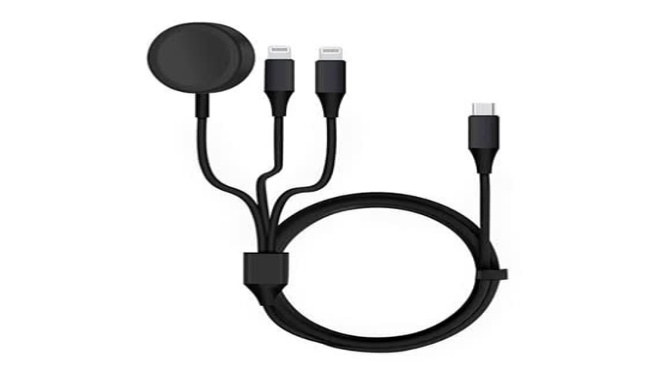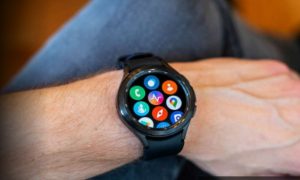Finding the ideal USB cable can make a critical difference in modern connectivity. Understanding the differences between mini USB and micro USB cables is essential to practical device compatibility and data transfer.
Though both USB standards may appear similar, each one has unique features and applications which set it apart. Additionally, investigating mini and micro USBs can bring forth their unique characteristics. These include physical design, compatibility issues, data transfer speeds, applications used, and much more.
Also Read– How Your Next Dive Trip Can Help Save the Oceans
Furthermore, discovering the differences between mini USB and micro USB will allow you to make informed decisions and ensure seamless connectivity in today’s connected world.
Mini USB vs. Micro USB: Side-by-Side Comparison
Mini and micro USBs appear similar, yet each type has its distinct advantages and disadvantages. It can be discouraging when users purchase USBs that cannot meet their purpose. Therefore, it is vital that users understand which type is suitable for their individual needs. Here are the commonly distinguished differences between the two USB cables.
Physical Size and Design
The mini USB connector is larger than its micro counterpart. However, the micro USB’s small size makes for more streamlined device designs. Mini USB features four pins arrangement with a larger rectangular shape. It also features two curved edges and a flat top surface.
Contrarily, the micro USB is distinguished from its counterpart by utilizing a five-pin design with trapezoidal sides, featuring slimmer profiles with wider bottoms and narrower tops.
Because of its smaller form factor, the micro USB has become adaptable across many portable devices like smartphones, tablets, and other gadgets. In addition, the ability to provide slimmer device profiles helps maximize manufacturers’ space utilization.
On the other hand, mini USB connectors have become less prevalent among modern devices. Additionally, they can still be found in applications requiring larger form factors or compatibility with older devices.
Data Transfer Speed
When comparing mini USB and micro USB in terms of data transfer speed, both connectors offer up to 480 Mbps transfer rates, respectively. Consequently, similarities indicate similar speeds regarding file transfer, data synchronization, or connecting peripherals.
Also Read– Here’s How Telemarketers Keep Getting Your Number
Furthermore, consistent data transfer speeds ensure efficient and reliable transmission of information for mini USB and micro USB. Thus, users can experience seamless file transfers, backup operations, and multimedia streaming experiences when connecting either type of connector.
Specifically, data transfer speeds depend on which USB version the devices and cables support. For instance, mini and micro USBs can support various versions of USB, including 2.0 or 3.0, with differing maximum data transfer rates.
Therefore, it is crucial that when connecting devices or cables, one should consider which USB version should be utilized to maximize data transfer speed.
Durability and Longevity
Mini USB connectors are considered less durable than micro USB. Over time, these devices become susceptible to wear and tear, leading to possible connector loosening or cable damage.
Mini USB connectors tend to wear down more quickly and become unreliable over time compared to their micro counterparts, decreasing lifespan and reliability over time.
Conversely, micro USB connectors have been created with better durability and longevity. For instance, they are designed to endure repeated connect-disconnect cycles — often, up to 10,000 cycles are considered safe for this use case.
Furthermore, micro USB cables and connectors with higher durability offer a longer lifespan and reliable performance. Accordingly, this feature makes them suitable for devices requiring frequent connections, such as smartphones and tablets.
Thus, micro USB connectors feature exceptional durability with their 10-thousand connect/disconnect cycle rating. On the other hand, mini USB connectors tend to have lower durability, which could result in cable problems that require careful handling or may necessitate replacement altogether.
Reversibility of the Connector
Mini USB connectors are nonreversible, meaning they must only be inserted in their port one way. Consequently, users must ensure the connector fits securely onto its port to create an effective connection.
Also Read– Why You Never Want to See These Four Letters on Your Boarding Pass
Thus, lack of reversibility may become frustrating and cause unnecessary inconvenience in situations with limited visibility. Micro USB connectors, on the other hand, are designed to be reversible. Plus, these connectors feature an innovative symmetrical design which makes insertion easy.
Specifically, users place either end into any port on any device without worrying about orientation issues or needing a precise alignment. Reversible features provide a user-friendly experience, making device connection quicker and simpler.
Efficiency
Mini USB connectors have long been recognized as less effective at transmitting power. Consequently, lower power output capabilities limit their capacity to charge or power devices that demand higher current output requirements.
Furthermore, larger mini USB connectors could increase resistance and power losses during data transfers or charging processes. Meanwhile, micro USB connectors have been designed with maximum efficiency in mind.
They feature excellent power output capabilities for faster charging times and reliable power delivery to connected devices. Accordingly, micro USB connectors feature smaller dimensions to reduce resistance and power loss for more effective data transfer and charging operations.
USB On-The-Go
Mini USB connectors typically do not support OTG (On-The-Go). These devices were generally created for one-way communications, such as connecting directly to computers or other host devices.
However, due to their limited pin configuration and non-OTG support, mini USB connectors cannot function as hosts that allow users to interact directly with peripherals.
On the other hand, micro USB connectors often support OTG (On The Go). Micro USBs also feature additional pins and necessary protocols supporting OTG functionality.
Thus, micro USB devices can serve as hosts and peripheral devices, providing direct communications among compatible devices without needing an intermediary computer host.
Mini USB vs. Micro USB: 7 Must-Know Facts
Also Read– Leave the sweatpants at home. Why we need a dress code for flying.
- The early 2000s saw widespread usage of mini USB connectors, while micro USB ones gained prominence later.
- Mini USB connectors feature larger form factors compared to micro USB.
- Micro USB connectors are smaller and more commonly found on smartphones, tablets, and portable devices.
- Mini USB connectors do not support reverse insertion, while micro USB ones allow simple insertion in either orientation.
- Mini and micro USB connections offer up to 480 Mbps data transfer speed for maximum efficiency.
- Micro USB connectors often support On-The-Go (OTG), enabling them to act as host devices and connect directly with peripheral devices.
- Mini USB connectors have become less prevalent since being outranked by micro USB and Type C USB plugs.
Mini USB vs. Micro USB: Which One Is Better? Which One Should You Use?
When choosing between mini USB and micro USB connectors, it is critical that one fully comprehends their differences and selects which best meets your needs. Both connectors offer unique characteristics that may influence their suitability for various devices and applications.
Mini USB connectors were once commonly employed with their larger form factor. However, micro USB connectors have gained significant momentum due to their smaller form factor and wide adoption across modern devices.
Micro USB connectors also boast the reversibility to enable easier insertion for faster use, making their use much simpler and more convenient. In addition, micro USB often supports USB On-The-Go (OTG), providing a direct connection with other peripherals.
Regardless, both mini USB and micro USB connectors offer up to 480 Mbps data transfer speed. When selecting between them, one must consider factors like physical size, compatibility, and availability when making your choice.
Also Read– Malaysia Airlines Eyes British Airways Business Seat For New Airbus A330neos
Ultimately, the decision between mini USB and micro USB comes down to specific device needs, compatibility issues with existing devices, and personal preference. Understanding the differences and weighing their relative merits will allow you to make an informed decision.

























